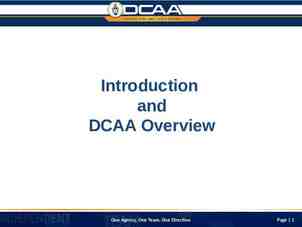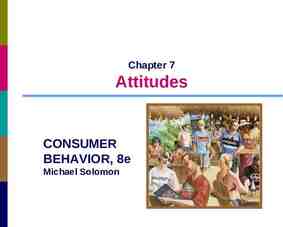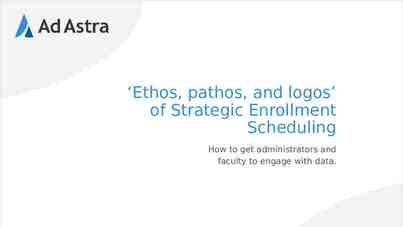Good to Great: Chapter 2 Level 5 Leadership Dana Cook Bryson Bell
23 Slides84.65 KB
Good to Great: Chapter 2 Level 5 Leadership Dana Cook Bryson Bell Tyler Buschman Philip Winfield Ian Walroven Jordan Jones Austin Bastin Stephanie Light
Level 5 Leader “You can accomplish anything in life, provided that you don’t mind who gets the credit.” --Harry S. Truman All Good to Great companies common thread was the “Level 5” Leader
Level 5 Leader Don’t need to be a larger-than-life leader to be successful The Level 5 leader goes further into explaining what an effective leader is and does.
Not What We Expected What is a Level 5 leader? An individual who blends extreme personal humility with intense professional will. Humble Individuals that stay in the background, but do whatever needs to be done in order to make the company great. Builds enduring greatness through a paradoxical blend of personal humility and professional will “Their ambition is first and foremost for the institution, not themselves”--Jim Collins Level 5 refers to the highest level in the hierarchy of executive capabilities Fully developed level 5 leaders embody all levels of the hierarchy
Level 5 Hierarchy Level 5 Executive Effective Leader Competent Manager Contributing Team Member Highly Capable Individual
Not What We Expected Research for the Book Collins instructed his research team to downplay the role of top executives when conducting research Wanted to avoid the “credit the leader”/ “blame the leader” mentality Leadership and God analogy “Leadership is the answer to everything” perspective is the modern equivalent of “God is the answer to everything” perspective of understanding the physical world in the Dark Ages. Level 5 leadership is an empirical finding not an ideological one Research found that good-to-great executives were all cut from the same cloth. “It didn’t matter whether the company was consumer or industrial, in crisis or steady state, offered services or products. It didn’t matter when the transition took place or how big the company.”—Jim Collins
Level 5 Duality Humility Will Level 5 Leader Do not mistake modesty, shy nature, and awkward manner as signs of weakness
Coleman Mockler CEO of Gillette Fought for his company and his passion ‘His placid persona hid an inner intensity, a dedication to making anything he touched the best it could possible be – not just because of what he would get but because he simply couldn’t imagine doing it any other way’
Ambition for the Company: Setting up Successors for Success Level 5 leaders have ambition first and foremost for the success of the company, not for their own riches and glory. Level 5 leaders want to see the company become even more successful after they leave. “I want to look out from my porch at one of the great companies in the world someday and be able to say, ‘I used to work there.”
Ambition for the Company: Setting up Successors for Success David Maxwell, CEO Fannie Mae Transformed Fannie Mae from losing 1 Million a day to earning 4 Million a day, beating the general stock market 3.8 to 1 At retirement declined controversial 20 Million retirement package and only asked for 5.5 Million
Ambition for the Company: Setting up Successors for Success Leaders of comparison companies were more concerned with their own reputation and personal greatness than the success of the company In three-fourths of good to great comparison companies, executives either chose weak successors or set their successor up for failure.
Rubbermaid: Good to Great and Great to Irrelevant CEO Stanley Gault Became synonymous with success in late 1980’s Led Rubbermaid to 40 consecutive quarters of earnings growth Hard driving, egocentric, tyrant In an article about leading change, the word “I” appears 44 times and “we” only appears 16 Gault did not leave a company that would be great without him 1st successor lasted only a year Had many struggles with management and strategic voids that eventually brought the company down One of the best Level 4 leaders in the past 50 years but not a level 5 leader which is why Rubbermaid went from good to great for a brief moment and then very quickly went from great to irrelevant
A Compelling Modesty Good-to-Great leaders are not “I centric” Quiet, Shy, Humble, and Mildmannered Goal is to never become “Largerthan-life”
A Compelling Modesty Two-thirds of the comparison companies had a “gargantuan personal ego” that led to further mediocrity or the downfall of the company Scott Paper CEO, Al Dunlap Chrysler CEO, Lee Iacocca
Unwavering Resolve to Do What Must Be Done Level 5 Leadership Characterizations The determination to do whatever needs to be done to make the company great Need to see both sides of the coin Level 5 leaders are fanatically driven Infected with an incurable need to produce sustained results Level 5 leaders display a workmanlike diligence More plow horse than show horse
Unwavering Resolve to Do What Must Be Done Inside vs. Outside Evidence does not support the idea that you need an outside leader High-profile outside change agent is negatively correlated with a sustained transformation Ten out of eleven good-to-great CEOs came from inside the company. The comparison companies turned to outsiders with six times greater frequency – yet they failed to produce sustained great results.
Unwavering Resolve to Do What Must Be Done George Cain, CEO of Abbott Laboratories Inspired standards Could not stand mediocrity in any form Set out to destroy one of the key causes of Abbott’s mediocrity: nepotism From transition date in 1974 to 2000, created shareholder returns that beat the market 4.5 to 1 Comparison to Upjohn (direct comparison company to Abbott) Upjohn then fell 89 percent behind Abbott
Unwavering Resolve to Do What Must Be Done Charles R. “Cork” Walgreen Cork sensed that the team had reached a watershed point of clarity and understanding Future lay within a different industry Faced long-standing family tradition Switched from food service to convenient drugstore
The Window and the Mirror Circuit City or GE Level 5 leaders vs. comparison leaders Bethlehem Steel to Nucor Luck
Cultivating Level 5 Leadership Do you have to be a level 5 leader to make your company great? Example: A woman who recently became a chief executive knew she wasn’t a level 5 and wanted to know if she could still make her company great Data pointed out that of 1,435 companies that appeared on the Fortune 500 in the initial candidate list, only 11 made the cut into their study Of those 11, all 5 had level 5 leadership positions
The Two Sides of Level 5 Leadership Professional Will Creates superb results, a clear catalyst in the transition from good to great Sets the standard of building an enduring great company; will settle for nothing less Personal Humility Demonstrates a compelling modesty, shunning public adulation; never boastful Channels ambition into the company, not the self; sets up successors for even greater success in the next generation
The Two Categories of People Those who have the seed of a level 5 leader For these people, work will always be first and foremost about what they get Those who are not born to be level 5 leaders The larger group These are people that can evolve to be level 5 leaders
Chapter Summary A level 5 leader is a key component of what it takes to make a company change from good to great This chapter was about what level 5’s are and the rest of the book describes what they do We should look at the model level 5’s and aspire to be like them Whether or not we make it to level 5, it will always be worth the effort




























